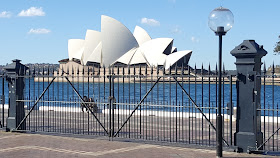This sail of the Sydney Opera House rises above the Bennelong restaurant. The building stands on Bennelong Point at the end of Circular Quay.
I'm going on holidays for the next few weeks so I'll be taking a break from posting until late August.
Linked to: Weekend Reflections.




























